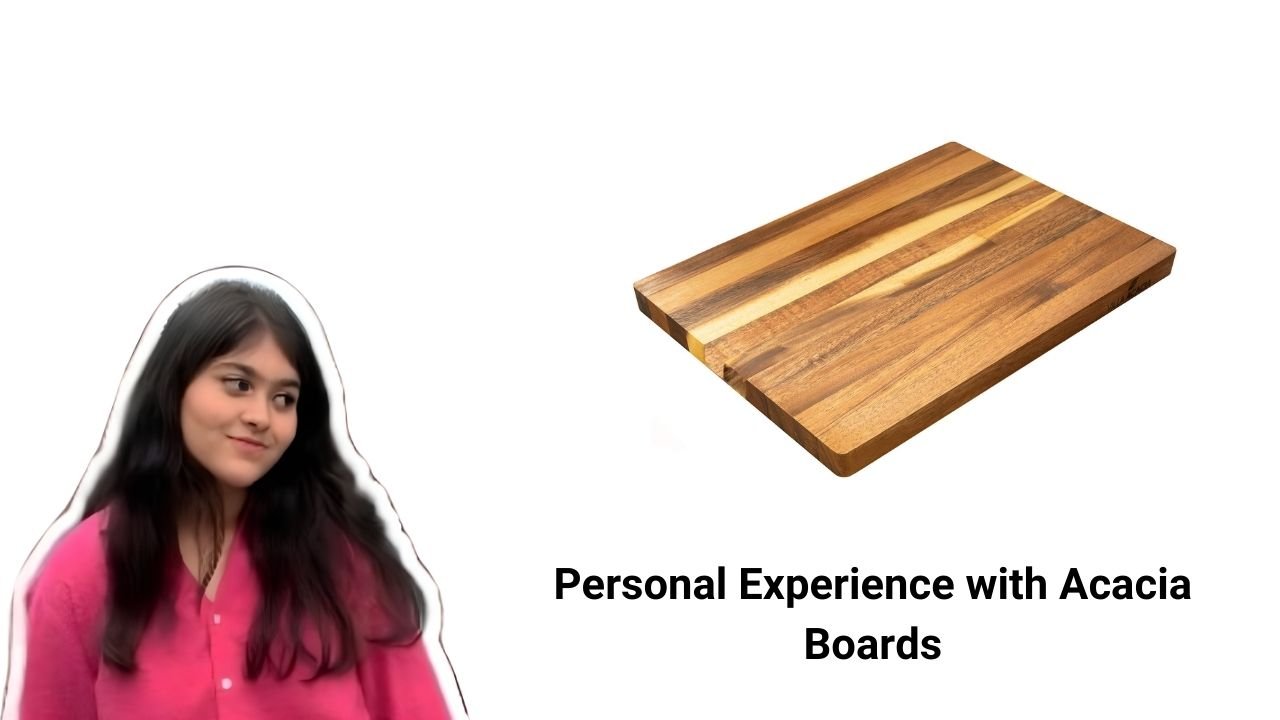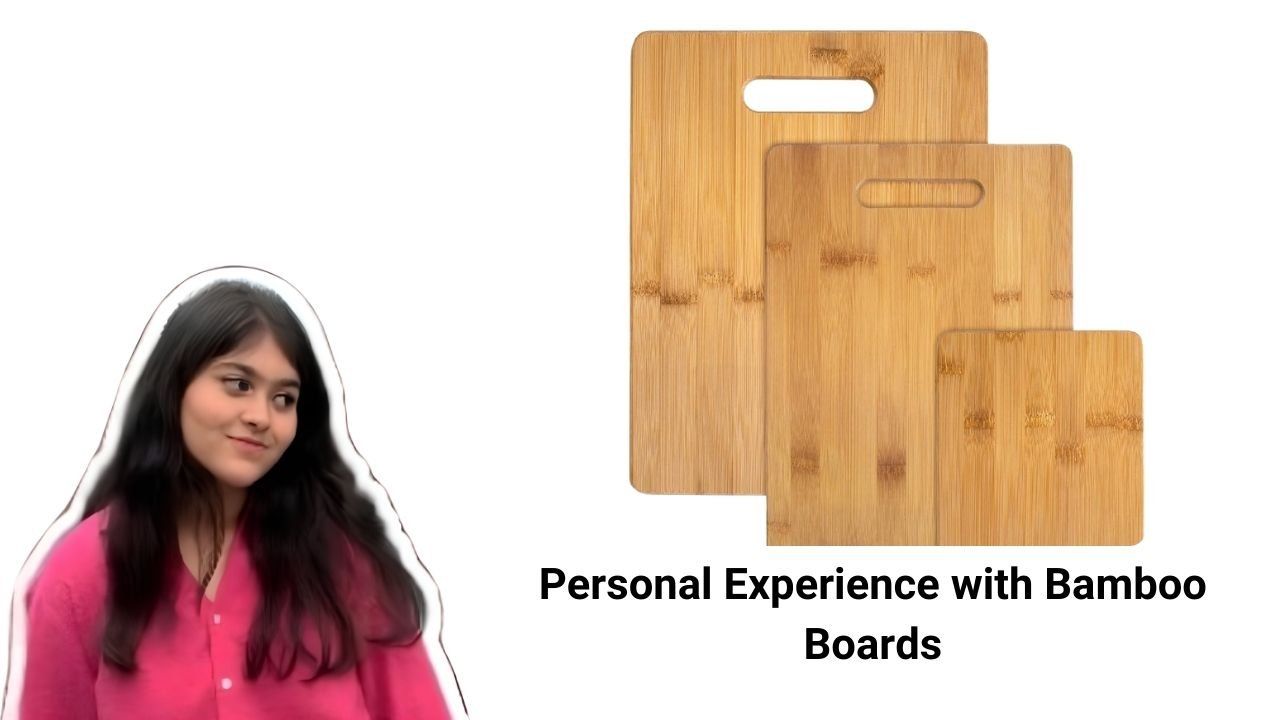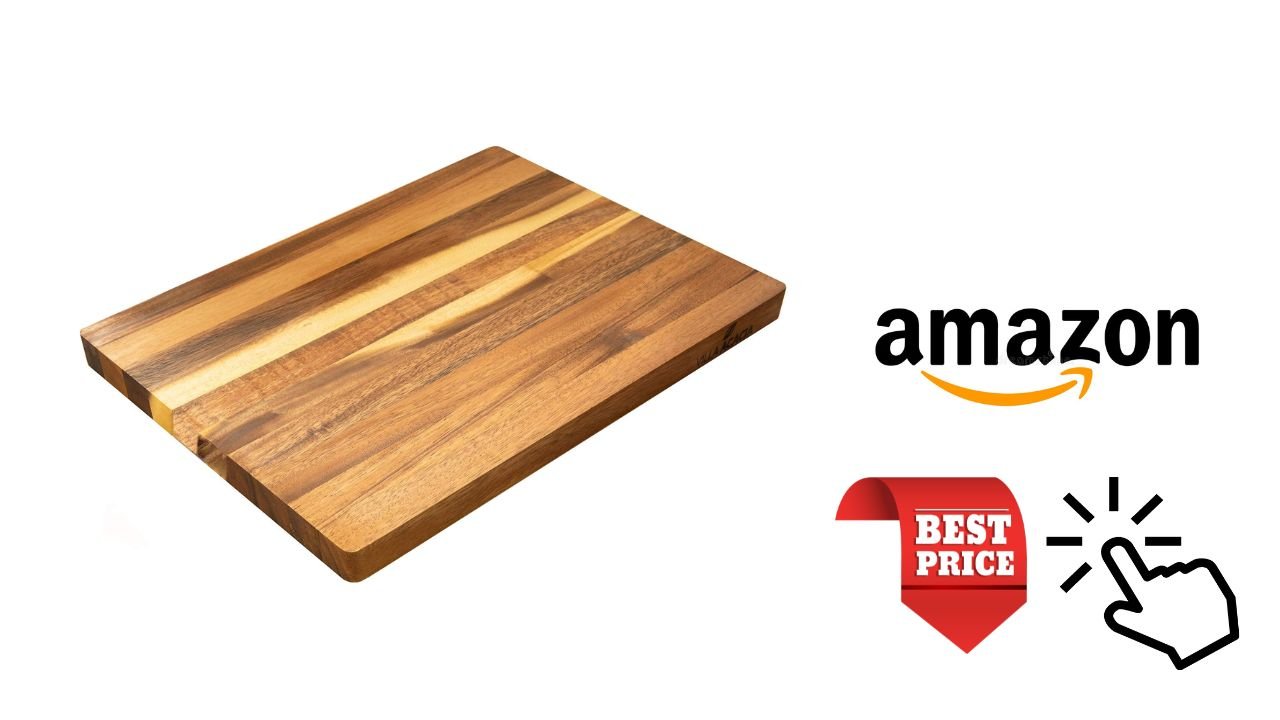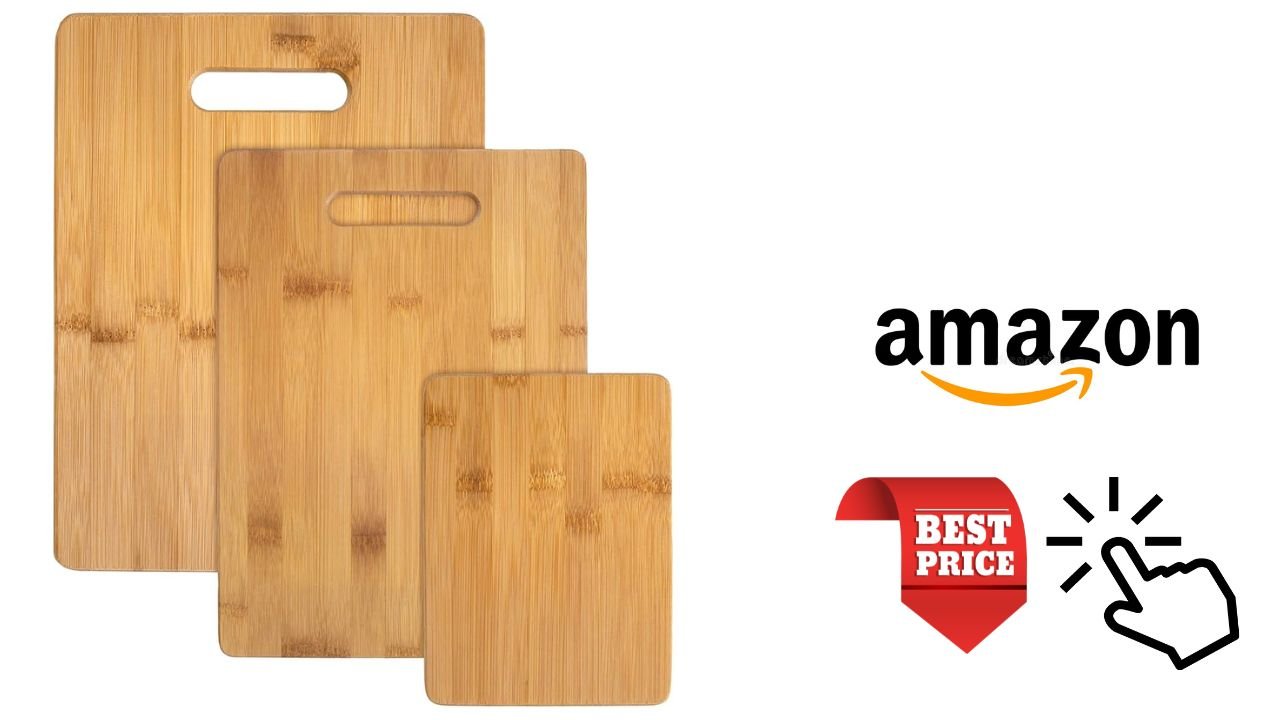When comparing Acacia vs Bamboo Cutting Board, acacia offers durability and elegance, while bamboo is more affordable, sustainable, and eco-friendly but requires more maintenance for long-term use.
Cutting boards are an essential part of every kitchen, acting as the foundation for food prep and culinary creations. When choosing a cutting board, the debate often boils down to Acacia vs Bamboo Cutting Board. Both are widely popular for their unique features, durability, and aesthetic appeal, but they cater to different needs. Having tried both extensively, I’m here to share my honest thoughts, practical insights, and help you decide which option suits your lifestyle best.
Why Choosing the Right Cutting Board Matters?
A good cutting board isn’t just about looks—it’s about function, maintenance, and longevity. The material of your cutting board affects your knives, food safety, and how much upkeep you’ll need to invest. Over the years, I’ve realized that not all cutting boards are created equal, and selecting the right one can enhance both cooking efficiency and kitchen aesthetics.
Acacia and bamboo cutting boards are two of the most commonly debated options. While acacia boards are celebrated for their elegance and knife-friendly surface, bamboo boards stand out for being eco-friendly and affordable. Let’s dive deeper into what makes each of these materials shine—and where they fall short.
The Case for Acacia Cutting Boards
Acacia cutting boards have a distinct charm, blending functionality with visual appeal. They’re crafted from acacia hardwood, known for its durability and natural beauty. After using an acacia board for over a year, here’s what I’ve observed:
Pros of Acacia Cutting Boards
- Durability: Acacia boards can withstand heavy chopping without cracking or denting.
- Water Resistance: Thanks to its natural oils, acacia resists water better than many other woods. With occasional oiling, it doesn’t warp or split.
- Knife-Friendliness: The surface is firm yet soft enough to keep knives sharp longer.
- Aesthetic Appeal: Acacia’s warm tones and unique grain patterns elevate any kitchen’s appearance.
- Eco-Friendly: Acacia trees grow quickly, making them a more sustainable hardwood option.
Cons of Acacia Cutting Boards
- Requires Maintenance: Regular oiling is necessary to maintain its luster and prevent drying.
- Heavyweight: While stability is a plus, the heft can make it cumbersome to move or clean.
- Pricier Option: Acacia boards are typically more expensive than bamboo or plastic alternatives.
- Staining Potential: Acidic foods like tomatoes may leave marks if not cleaned promptly.
Personal Experience with Acacia Boards
When I first started using an acacia board, I was impressed by how luxurious it felt compared to my old plastic board. It handled everything from chopping vegetables to carving meat with ease. Over time, I noticed that the edges started drying out, but a simple routine of monthly oiling restored its original charm. Despite its weight, the board’s sturdiness makes it worth the effort.
The Bamboo Cutting Board: An Eco-Friendly Alternative
If you’re looking for a cutting board that’s lightweight, budget-friendly, and kind to the environment, bamboo is an excellent choice. Bamboo cutting boards are made from fast-growing, renewable bamboo, which makes them a sustainable option. Here’s what I discovered after years of using bamboo boards:
Pros of Bamboo Cutting Boards
- Sustainability: Bamboo grows rapidly and doesn’t require replanting, making it one of the greenest choices.
- Affordability: These boards are usually less expensive than acacia or other hardwood options.
- Lightweight: Easy to lift, clean, and store.
- Stylish Appearance: Bamboo’s light, natural woodgrain adds a modern, minimalist vibe to any kitchen.
- Durable Surface: Bamboo resists knife scratches and is surprisingly tough for its weight.
Cons of Bamboo Cutting Boards
- Knife Wear: Bamboo is harder than acacia and can dull knives over time.
- Water Sensitivity: Prolonged exposure to water can cause warping or cracking.
- No Dishwasher Use: Bamboo boards require handwashing and immediate drying.
- Requires Regular Oiling: To prevent splitting, you’ll need to oil bamboo boards frequently.
Personal Experience with Bamboo Boards
I love how versatile and lightweight bamboo boards are. One of my favorite features is the juice grooves on some models, which are perfect for catching liquids while cutting fruits or carving meats. However, I once left a bamboo board soaking in water, and it warped beyond repair—a lesson in being diligent about care.
Acacia vs Bamboo Cutting Board: Key Comparisons
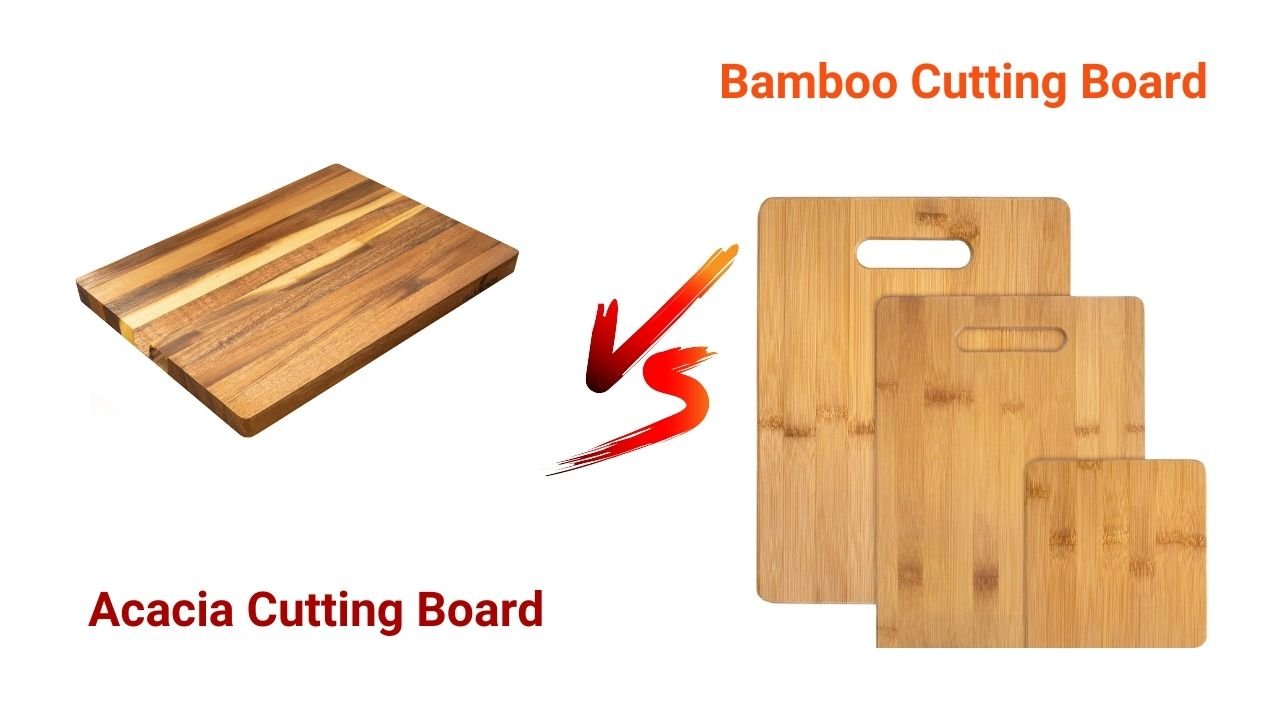
Here’s a detailed breakdown of how acacia and bamboo cutting boards stack up against each other across essential factors:
| Feature | Acacia Cutting Board | Bamboo Cutting Board |
|---|---|---|
| Durability | Long-lasting and less prone to cracking | Durable but requires more care to avoid warping |
| Knife-Friendliness | Gentle on knives, preserving sharpness | Harder surface, may dull blades over time |
| Eco-Friendliness | Sustainable but less so than bamboo | Highly sustainable and eco-friendly |
| Aesthetic Appeal | Rich, dark tones with unique grain patterns | Light, natural woodgrain, minimalist style |
| Water Resistance | Resists water with regular oiling | Can warp or split if soaked |
| Price | More expensive | Budget-friendly |
Winner:
- For Durability and Knife-Friendliness: Acacia takes the lead.
- For Sustainability and Affordability: Bamboo wins hands down.
Maintenance Tips for Both Boards
Regardless of which cutting board you choose, proper maintenance will ensure it lasts for years. Here are some tips that have worked for me:
- Avoid Water Damage: Never soak wooden or bamboo boards in water. Clean them with mild soap and warm water, then dry immediately.
- Oil Regularly: Use food-grade mineral oil monthly to maintain the board’s surface and prevent drying.
- Remove Odors: For stubborn smells, rub the board with coarse salt and a slice of lemon.
- Store Upright: Keep boards upright in a well-ventilated area to avoid moisture buildup.
My Final Verdict on Acacia vs Bamboo Cutting Board
Both acacia and bamboo cutting boards are fantastic options, but the right choice depends on your needs and lifestyle.
- Choose Acacia If:
- You prioritize durability, knife-friendliness, and a rich, elegant aesthetic.
- You don’t mind investing extra money and time in maintenance.
- Choose Bamboo If:
- You value sustainability, affordability, and a lightweight design.
- You prefer a board with a modern, minimalist look.
Personally, I use both for different tasks. My acacia board is my go-to for heavy-duty chopping and special occasions, while my bamboo board is perfect for lighter tasks and casual entertaining.
Read More: Maple vs Walnut Cutting Board: What I Discovered
FAQs About Acacia vs Bamboo Cutting Board
Is acacia more durable than bamboo?
Yes, acacia is more durable and less prone to cracking or warping with proper care.
Does bamboo dull knives faster than acacia?
Yes, bamboo is harder and can dull knife blades over time, whereas acacia is gentler on knives.
Can I put either board in the dishwasher?
No, both acacia and bamboo boards should be handwashed to prevent damage.
Which cutting board is more eco-friendly?
Bamboo is the more eco-friendly option due to its rapid growth and renewable nature.
How often should I oil my cutting board?
For both acacia and bamboo, oiling once a month with food-grade mineral oil is recommended.
Can bamboo boards handle heavy-duty tasks?
Yes, but they may wear out faster than acacia boards with frequent heavy use.
Are acacia boards stain-resistant?
Acacia is relatively resistant to stains but can develop marks if not cleaned promptly after cutting acidic foods.
Which board is better for a small kitchen?
Bamboo boards are lightweight and easy to store, making them ideal for smaller spaces.
Conclusion
The Acacia vs Bamboo Cutting Board debate boils down to your priorities. Both are excellent choices with distinct advantages, so consider your cooking habits, budget, and aesthetic preferences. With proper care, either board can become a reliable, long-lasting kitchen companion.

Hey, I’m Nandoza Ahammad, passionate food enthusiast and creator of narzcookingcave.com, shares delicious recipes and cooking tips worldwide.

